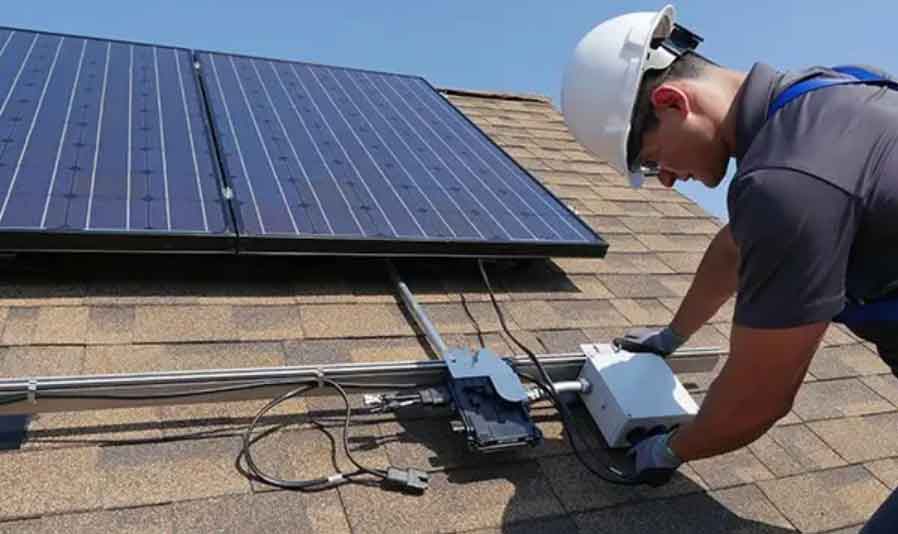
Understanding solar panels for your home involves several key factors, including how they work, the benefits they provide, installation considerations, and maintenance.
- How Solar Panels Work: Solar panels for your home are composed of photovoltaic (PV) cells, which convert sunlight into direct current (DC) electricity. An inverter then converts this DC electricity into alternating current (AC), which can be used in your home.
- Types of Solar Panels: The most common types are monocrystalline, polycrystalline, and thin-film solar panels for your home. Monocrystalline panels are more efficient but also more expensive. Polycrystalline panels are less expensive but also slightly less efficient. Thin-film panels are versatile and lightweight but generally have the lowest efficiency.
- Energy Efficiency: The efficiency of a solar panels for your home is measure of its ability to convert sunlight into electricity. Higher efficiency means more power generation in less space, but also a higher cost.
- Installation Considerations:
- Roof Assessment: Your roof should be in good condition, have enough space, and receive ample sunlight.
- Orientation and Tilt: Panels should ideally face south in the northern hemisphere (and north in the southern hemisphere) and be tilted at an angle close to your location’s latitude for optimal sun exposure.
- Local Regulations and Incentives: Check local building codes, zoning laws, and potential incentives like tax credits or rebates.
- Benefits of Solar Panels:
- Reduced Electricity Bills: Solar panels for your home can significantly lower your electricity bills. Some systems might even generate more electricity than you need, allowing you to sell the excess back to the grid.
- Environmental Impact: Solar energy is a clean, renewable resource that reduces your carbon footprint.
- Energy Independence: Reduces your reliance on traditional power sources and provides a consistent power supply, especially if paired with a battery storage system.
- Maintenance and Longevity: Solar panels for your home require minimal maintenance, mostly cleaning to remove dust, leaves, or snow. They are durable and typically come with a warranty of 20-25 years.
- Cost and Return on Investment: The initial cost includes the panels, inverter, batteries (if off-grid or with battery backup), wiring, and installation labor. The return on investment depends on the initial cost, how much electricity you use, and the cost of electricity in your area. Solar panels for your home can take several years to pay for themselves, but they often increase property value.
- Monitoring Systems: Many solar panels for your home include monitoring systems that allow you to track energy production and consumption, helping you optimize your use.
When considering solar panels for your home, it’s advisable to consult with local experts to get a system that suits your specific needs and to ensure proper installation.
